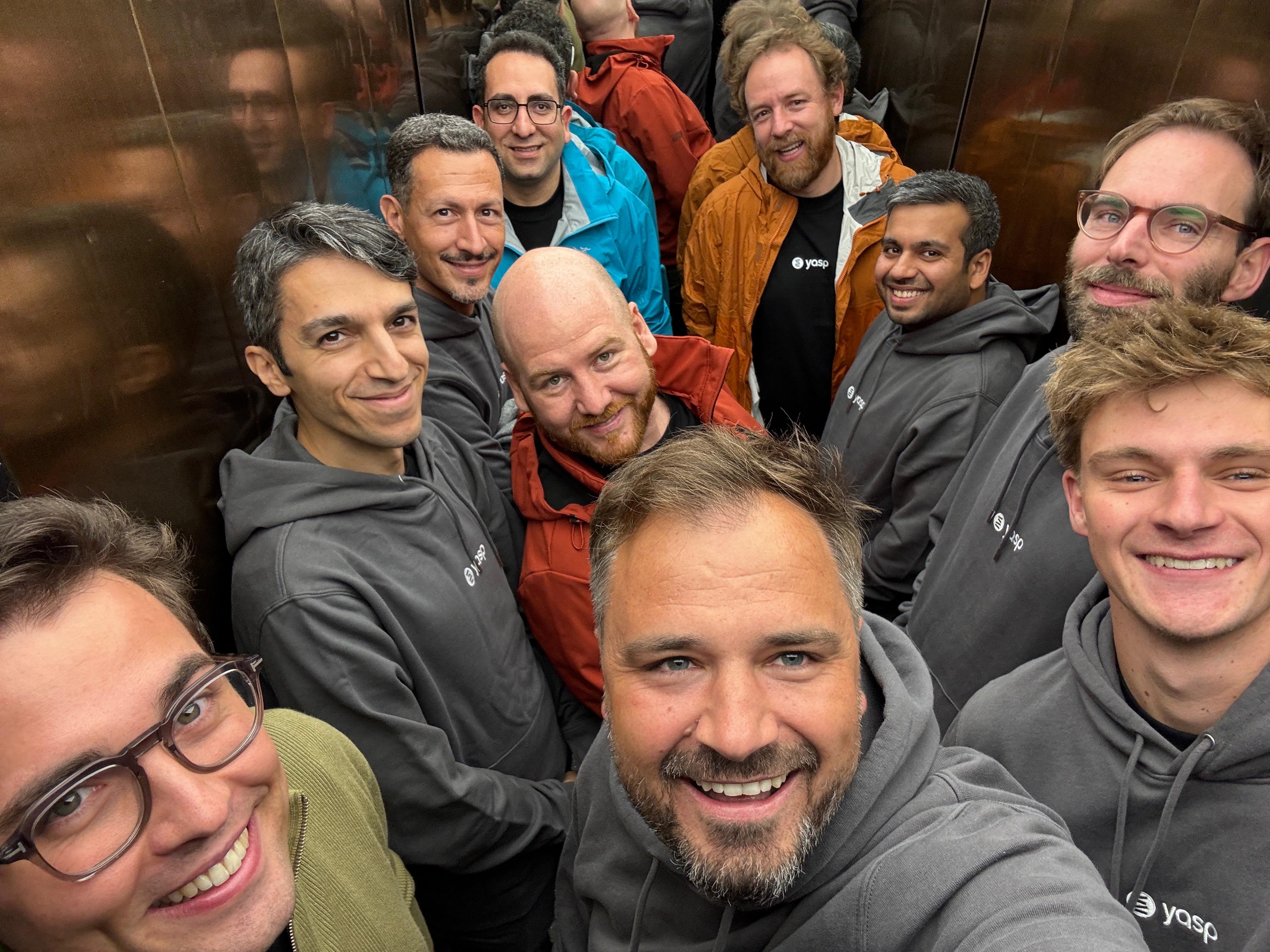These insights are based on our experience evaluating start-ups and scale-ups and, more importantly, on direct conversations with buyers and potential adopters across industries. Despite AI dominating boardroom conversations, adoption still lags behind the hype. From our discussions with SME and enterprise buyers, the demand is real but so are the blockers. So, what does it take for founders to truly win in this evolving landscape?
Part II: Founder Playbook – Breaking Through the Enterprise AI Adoption Wall
Find your niche
The first step is to find and own your specific niche. Sounds easy, but how do you actually identify the right one? Here are three possible ways: by region, by industry or by role.
Starting with the regional opportunity: Unsurprisingly, one of the biggest AI adoption concerns is data security and privacy. Buyers are understandably cautious about how their data is handled, leading many to restrict or ban the use of general-purpose large language models (LLMs) like OpenAI or LLaMA, particularly for sensitive data. The good news? These concerns also create an opportunity for founders to address them with region-specific solutions, turning adoption barriers into a competitive advantage. For example, in Europe, startups are uniquely positioned to build products tailored to strict regional regulations and requirements. European clients often need hybrid deployment (on-premises plus cloud), genuinely EU-hosted LLMs (not AWS-based workarounds), and modular AI stacks that support compliance and adaptability. Meeting these needs builds trust, embeds your solution into essential workflows and makes it more difficult for competitors (especially international ones) to win over your customers.
Beyond regional opportunities, we do see huge potential for AI agent adoption in sectors where complexity, inefficiency or stagnation are deeply entrenched. These include both entire industries and specific job roles that are ripe for disruption. For example, AI agents offer substantial potential in industry-specific applications. Just think of low-margin, high-complexity sectors like eCommerce, logistics, and retail where milliseconds and minor errors matter. In these markets, even marginal efficiency gains can meaningfully impact the bottom line. What’s more, these sectors also generate vast amounts of transactional data - an underutilized asset that gives founders the chance to build highly specialized, deeply integrated solutions. The same applies to incumbent-heavy industries with huge customer bases like banking, insurance and healthcare. These sectors are often shaped by outdated legacy systems, regulatory complexity and compliance needs, high competitive pressure, making them prime candidates for innovation.
Now turning to the job level. Niche-specific opportunities also emerge when focusing on individual roles and functions, also across industries. Many sectors face persistent talent shortages, either because roles are highly specialized and difficult to fill, or because they involve repetitive, manual tasks that few people want to do. AI has the potential to bridge these gaps by, depending on the specific job, either fully automating or augmenting decision-making, reducing bureaucratic friction, and optimizing resource allocation. At the job level, we also see a clear license to operate for more horizontal players, as more generalizable (vs. domain-specific) knowledge applies and patterns repeat across customers, such as invoice processing or Level 1 customer support, where incoming requests often follow similar structures regardless of industry.
A further argument for more horizontal platforms emerges when companies deploy multiple AI agents across departments: eventually, these agents will need to interact, coordinate, and share context, creating demand for a unified layer that manages orchestration and cross-agent communication. This could open up an attractive strategic position for startups: to become the “spider in the web” that connects and coordinates task-specific agents across the organization, offering visibility, governance and efficiency gains at scale.
Founder tip: As part of finding the right niche, also take the time to understand how ready that space really is for AI agents. Talk to real customers. Are they just experimenting or are they serious about rolling this out across the org? And: Is there an actual budget for the implementation beyond the initial PoC or are you just a line item in an innovation team’s wishlist? The best bets lie where urgency, technical readiness and real money meet.
Deliver the product experience buyers expect
You’ve probably come across the ongoing debate about whether AI will replace SaaS, compete with it, or simply coexist. While AI clearly holds massive potential, its performance is still often unpredictable and ROI can be hard to pin down. By contrast, SaaS became the default because it offered simplicity, reliability, and easy integration.
As a founder building and selling AI agents, it’s important to recognize that your customers are used to buying SaaS. And with that comes clear expectations: dependable service levels, stable performance and clear ROI. To drive adoption of your AI agents and build long-term trust, you need to meet those same standards. Otherwise, it risks being seen as just another pilot program, but not worth scaling or budgeting for long-term. Also, in our conversations with buyers and early adopters we learned that many AI agent deployments today don’t replace workflows, but rather augment them. That makes them feel like an additional cost, not an immediate gain, at least in the short-term, making it even more important to prove and frame your ROI. For example, when an AI agent helps a human customer support employee draft replies but doesn’t eliminate the headcount, the ROI story needs to hinge on speed (e.g. more requests per hour, higher resolution rates) and consistency (no downtime, ), not just cost.
Founder tip: To drive adoption, focus on building trust and lowering perceived risk from day one. Align with familiar buying expectations (=SaaS). Agree on reliability and success metrics that you can meet and be transparent about limitations, for instance with dashboards tracking number of jobs completed, time saved, latency, hallucination rates etc. on an ongoing basis. On pricing a) for budget-conscious customers, offer (capped) low-entry plans and upsell over time, b) be open to tie pricing schemes to specific outcomes and c) consider offering performance-based opt-out clauses in multi-year deals to align interests, for instance if specific KPIs (i.e. hallucination rates fall below the pre agreed threshold).
Support your customers in navigating the change
Meeting SaaS-era expectations means more than delivering a product. It means delivering an experience. Many of the buyers we spoke to see AI adoption as a business transformation.. However, we learned that mostly SME customers expect hands-on support from day one, which includes helping them identify and prioritize use cases, align internal stakeholders and realize value fast. For many startups, this can feel like a stretch. However, the good news is that many of them have budgets set aside for exactly this kind of consultative rollout. And with AI still seen as a risky category, especially when sold by early-stage vendors, proactive onboarding isn’t a nice-to-have. It’s how you de-risk the purchase. On the other hand, what we learned for large enterprise customers, it’s mostly quite the opposite. They don’t seek for a partner that supports them with the implementation, but rather want to take the process in their own hand and setup internal task force taking ownership of onboarding, training, use case prioritization etc.
Regardless of the customer segment, the common denominator is that AI adoption is now treated as Chefsache, a top-down mandate driven by central IT or even the CEO. That visibility helps open doors. But it often slows things down, too. Executive buy-in tends to trigger broader stakeholder involvement, more scrutiny, and longer time to value. And crucially, mandates alone rarely drive real adoption. Why? Because successful rollouts are bottom-up, not just top-down. When frontline teams and middle managers aren’t included early, they often resist, either because they fear being replaced, or they need to get used to a new way-of-working.
Founder tip: Don’t just ship a great product, but especially for SME customers, be prepared to also provide handholding. Guide their rollout, involve the right people early. Free trials without support often disappoint. Ensure someone on the customer side owns the outcome. Blend top-down support with bottom-up usage.
In our eyes, these are some of the points on how you move from being one vendor among many to a partner they don’t want to replace. Winning with AI agents isn’t just about technology, it’s about timing, trust and transformation. What have you learned on your journey so far? What worked, what didn’t? We’d love to hear your experiences and help others learn from them, too.


.png)




.avif)



























.avif)


.avif)





















.avif)
.avif)

